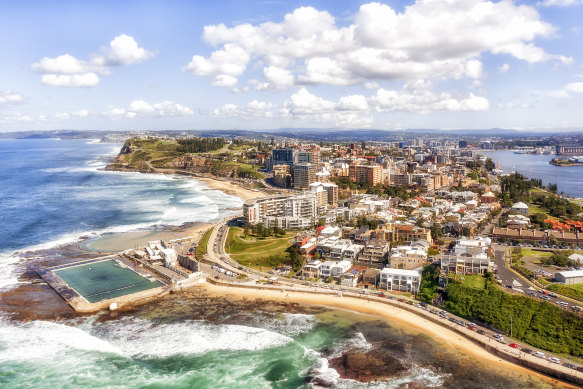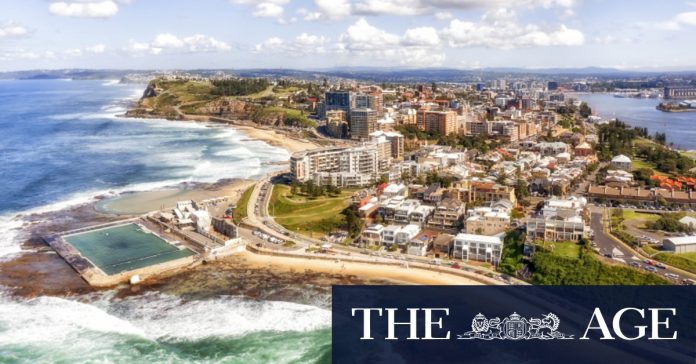[ad_1]
KPMG urban economist Terry Rawnsley said the modest growth expected in regional NSW and Queensland was likely due to popular regional towns approaching an affordability ceiling.
“[For example,] Wollongong and Newcastle which make up the bulk of regional NSW, and they’re really struggling with affordability,” he said. “The purchasing power of the local communities is a bit stretched.
“In lots of places there have been big price increases. There’s a big ripple effect from the COVID tree changer who paid $500,000 for a house in a country town, who displaced a local who could only pay $450,000.”

Newcastle’s property market was becoming unaffordable to locals. Credit: iStock
PRD Real Estate chief economist Dr Diaswati Mardiasmo said regional centres had proved resilient in the post-COVID economy, which had helped to grow local property markets when combined with low numbers of homes for sale.
“There has been quite a big wage growth when compared to the capital cities,” she said. “Places like Newcastle, Tamworth, Mackay, the Whitsundays, on average, their wage growth is 6 per cent to 7 per cent which is much higher than the national average.
“They don’t have as many people as Sydney and Melbourne, of course, so even though they’re growing in terms of population growth, they don’t have as much human capital there and their wage growth is actually higher.”
Rawnsley agreed. “Part of the gift from COVID was surges of people into these cities,” he said. “There’s enough happening in these centres to keep people coming through … their economies are looking a bit different to what they were pre-COVID so that’s helping support that local housing market.”
Powell said Victoria’s ongoing loss of residents to other states had caused its regional areas to fall behind its peers.
“One of the big things for Victoria that’s been a changed dynamic is the net interstate migration is negative,” she said. “I cannot stress how unusual that is. By now we would have anticipated that it would recover.”
Loading
Rawnsley expected price falls in regional Victoria, as the lockdown-era tree- and sea-change trends had caused some regional centres to become overvalued.
“There’s less of that flow of people out into the regional parts of Victoria,” he said. “Then places like the Surf Coast ran a bit too hard in that COVID period so they’re coming back to the fundamentals in those locations.”
Powell said other factors which also had affected Melbourne’s property market would continue to weigh on demand in the state’s regions, too.
“Things like taxation changes, that has impacted sentiment for people looking to invest in Victoria. Investors are looking elsewhere because the capital growth isn’t there,” she said.
[ad_2]
Source link


